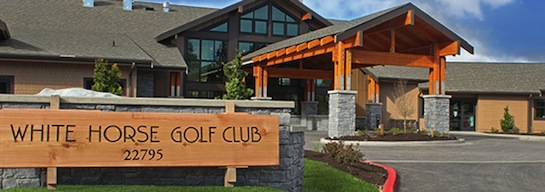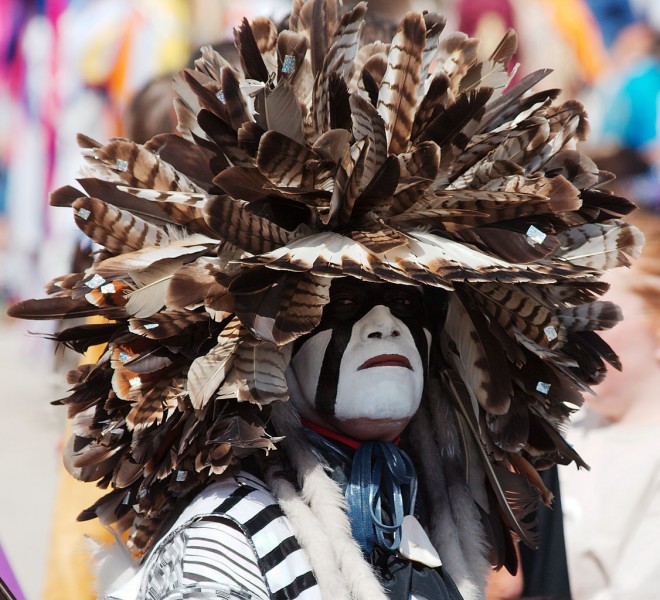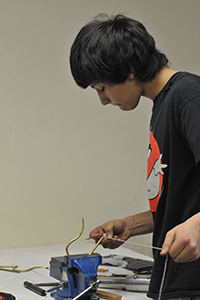
Source: Indianz.com
Proclaiming Certain Lands, White Horse Golf Course Property, as an Addition to the Port Madison Indian Reservation for the Suquamish Tribe (February 28, 2014)
syəcəb

Source: Indianz.com

WOUNDED KNEE — Despite wintry temperatures, under a brilliant blue sky, Wounded Knee 1973 veterans, such as Clyde Bellecourt and Bill Means, were joined Thursday, February 27, 2014 with a younger generation of American Indian Movement grassroots members—many of whom were not yet born—to remember the takeover 41 years ago of Wounded Knee.
February 27th is known in Indian country as Liberation Day because it was on that date in 1973 the American Indian Movement (AIM) occupied the Pine Ridge Reservation near Wounded Knee in protest against the federal government and its policies related to American Indians.
PHOTO Courtesy: Richard Milda
A 71-day standoff between federal authorities and AIM ensued. On March 13, assistant attorney general for the Civil Division of the US Justice Department, Harlington Wood Jr., became the first government official to enter Wounded Knee without a military escort. Determined to resolve the deadlock without further bloodshed, he met with AIM leaders for days and, while exhaustion made him too ill to conclude the negotiation, he is credited as the “icebreaker” between the government and AIM.
PHOTO Courtesy: Richard Milda
Both sides reached an agreement on May 5 to disarm, and three days later the siege had ended and the town was evacuated after 71 days of occupation; the government then took control of the town. During the incident, a Cherokee and an Oglala Lakota were killed by the FBI.
Yesterday, those gathered remembered and honored the memory of 1973 Wounded Knee veteran, Carter Camp (Ponca), who walked on in late December with a dinner in Manderson, South Dakota.
Editor’s Note: Indigenous Peoples Issues and Resources contributed to this article.
By Gale Fiege, The Herald
Sculptor Karla Matzke of Camano Island helped national author E. Ashley Rooney write the recently released coffee table book “100 Artists of the Northwest.”
Rooney has written other books highlighting regional artists in New England, the Mid-Atlantic, the Midwest and the South.
Beginning March 1, the Matzke Fine Art Gallery and Sculpture Park features 25 of the 100 artists featured in the Northwest book. A book signing, opening party and potluck goes from 4 to 9 p.m. Saturday. The gallery and park are at 2345 Blanche Way on Camano Island.
People can see the show on weekends through April 13.
The 25 artists showing represent the artistic vibrancy of the Northwest region, Matzke said.
“Using paint, sculpture, glass, oil, clay, wood and other contemporary mediums, these 21st century artists combine, redesign, and transform their materials into pieces of works that change the way we perceive art in the Northwest,” Matzke said.
The artists, including Matzke, are Sabah Al-Dhaher of Seattle, Liana Bennett of Bothell, Brian Berman of Bainbridge Island, Lance Carleton of Lake Stevens, Shirley Erickson of Bellingham, Kathleen Faulkner of Anacortes, Aaron Haba of Camano Island, Karen Hackenberg of Port Townsend, Phillip Levine of Burien, James Madison of Tulalip, Lin McJunkin of Conway, Merrilee Moore of Seattle, Richard Nash of Oak Harbor, Peregrine O’Gormley of La Conner, Doug Randall of Portland, Debbi Rhodes of Camano Island, David Ridgway of Bellingham, Sue Roberts of Guemes Island, Ethan Stern of Seattle, Donna Watson of Camano Island and Bill Wentworth of Poulsbo.
The book, which includes a guide to galleries, sculpture parks, museums and schools, is available for sale for $38 at the gallery.
On April 25, 26 and 27, Matzke will host her Stone Carving Workshop and Retreat for beginning carvers and more experienced sculptors.
Instruction by master carver Alexandra Morosco will cover history, concepts, processes, techniques, materials and tools associated with the creation of three dimensional forms in stone.
Register by March 1 at www.matzkefineart.com or call 360-387-2759.

By Hannah Osborne , February 27, 2014 19:00 PM GMT
The mystery of how Native Americans managed to survive the last Ice Age 25,000 years ago has finally been solved. they got through the extreme cold by battening in one place and feasting on woolly mammoths.
Researchers at Royal Holloway, University of London, and the Universities of Colorado and Utah believe they have worked out where Native Americans spent the 10,000 years before they settled in Alaska and North America.
Published in the journal Science, the scientists analysed fossils showing that ancestors of Native Americans lived in a region between Siberia and Alaska where there were enough woody plants to make fires to keep warm.
Prior to their findings, it was a mystery where Native Americans jumped the Ice Age gap and spent ten millenna before they arrived in the US.
Scott Elias, of Royal Holloway, said: “This work fills in a 10,000-year missing link in the story of the peopling of the New World.”
“Once burning, large leg bones of ice-age mammals would have burned for hours, keeping people alive through Arctic winter nights.”
–Researcher Scott Elias
The study shows how ancestors of Native Americans lived on the Bering Land Bridge, which now lies beneath the waters of the Bering and Chukchi Seas. The central part of Beringia was covered in shrub tundra – the dominant vegetation in modern Arctic Alaska – with dwarf willow, birch shrubs, moss and lichens abundant.
They made their discovery after analysing insect and plant fossils found in sediment cores taken from the ancient land bridge surface, around 60 metres below the water’s surface.
Elias said: “We believe that these ancestors survived on the shrub tundra of the Bering Land Bridge because this was the only region of the Arctic where any woody plants were growing. They needed the wood for fuel to make camp fires in this bitterly cold region of the world.
“They would have used dwarf shrub wood to get a small fire going, then placed large mammal bones on top of the fire, to ignite the fats inside the bones. Once burning, large leg bones of ice-age mammals would have burned for hours, keeping people alive through Arctic winter nights.”
By Andrew Gobin
Tulalip Heritage Hawks kept the audience on their toes cheering for the win over Neah Bay Red Devils February 22nd, taking the Tri-District Title 68-66. Jolene Fryberg, mother of starting senior Shawn Sanchey, said the game was nauseatingly intense, with the outcome uncertain until the final shot.
Hawks play at regionals at Everett Community College on February 28th. They are one win away from the state championships tournament.
Heritage Hawks 21 15 10 12 —68
Neah Bay Red Devils 14 14 25 14 —66
Shawn Sanchey led the Hawks with 18 points scored, Brandon Jones 8, Bradely fryberg 10, Robert Miles 2, Keanu Hamilton 16, Willy Enick 4, Ayrik Miranda 9.
UNITED STATES SENATE COMMITTEE ON INDIAN AFFAIRS
Chairman Jon Tester (D-MT)
| For Immediate ReleaseFebruary 26, 2014 |
Contact: Reid Walker
|
U.S. SENATE –Today the U.S. Senate Committee on Indian Affairs held an oversight hearing on the importance of Early Childhood Development and Education in Indian Country – one of the first in a series of hearings examining the critical state of education in Indian Country.
“As a former educator, I know first-hand the impacts that a quality education can have on young folks throughout their lives, and I believe that improving those opportunities can be a starting point for addressing many of the issues that are too prevalent across Indian Country,” said Committee Chairman Jon Tester (D-MT).
“When we invest in early childhood education, we are investing in not only the child, but the family and community around him or her,” Tester added. “And to me, that is good policy. Another important benefit is the ability of our programs to support Native languages, and help preserve and protect these important connections to Native culture and identity – something I strongly support.”
According to Federal data, in the 2011 school year, the percentage of children and youth served under the Individuals with Disabilities Education Act was highest for American Indians/Alaska Natives. In 2010, approximately 28.4 percent of the AI/AN population lived in poverty compared with approximately 15.3 percent of the total population. In 2010, unemployment on Indian reservations was at approximately 50 percent and 49 percent of AI/AN children lived with parents who lacked secure employment compared to approximately 33 percent of the total U.S. population.
Children in AI/AN families are also more likely to experience violence, substance abuse and neglect. A study of Adverse Childhood Experiences in seven tribes found that approximately 86 percent of participants had one or more adverse experiences and approximately 33 percent had four or more. Approximately 28 percent of AI/AN households with children were food insecure, compared with approximately 16 percent of non-AI/AN households.
“Given these facts, the U.S. Department of Health and Human Services is moving forward through a number of programs to improve the well-being and education of AI/AN children,” said Linda Smith, Deputy Assistant Secretary and Interdepartmental Liaison for Early Childhood Development of the U.S. Department of Health and Human Services’ Administration for Children and Families. “Administration for Children and Families has four important programs that serve children prenatally through school entry. These efforts mirror the President’s Early Learning Initiative, which starts with home visiting as the entry point for early childhood services through the Maternal, Infant, and Early Childhood Home Visiting Program and also includes: The Child Care and Development Fund; Early Head Start and Head Start Programs; The Race to the Top – Early Learning Challenge Program; and The Tribal Early Learning Initiative.”
Smith added, “As with all of our nation’s early learning programs, there is more that could be done to provide more high quality, stable programs for all of our youngest and most vulnerable citizens.”
“American Indian, Alaska Native and Native Hawaiian children need quality child care settings to improve lifelong outcomes. Increased risk factors such as poverty, low birth weight, and low educational attainment of mothers contribute to the need for investment in quality child care in Indian country,” said Barbara Fabre, a tribal member from the White Earth Nation in Minnesota, and Chairwoman of the National Indian Child Care Association. “There are many challenges faced by American Indian, Alaska Native and Native Hawaiian children. Tribal child care is a vehicle for intervention and support of quality care and cultural strengths. The Federal government must take into account the needs of tribal communities, which must be determined by tribal communities, and served by tribal programs in order to make meaningful changes to practices. Reduced funding and resources will continue to undermine tribal culture and American Indian, Alaska Native and Native Hawaiian children’s development.”
“Currently over 90 percent of Native American students are in public schools,” saidDanny Wells, Executive Officer for the Division of Education, representing the Chickasaw Nation. “There are too many issues in public schools to expect the teachers or administrative staff to be aware of tribal programs, which results in tribal students being disconnected to services that could help them perform better academically and socially. Tribal representatives should have access to student records (attendance, grades, etc.) so that tribes can become partners with the schools to improve the tribal student’s education or prevent at-risk students from failing or dropping out of school.”
Dr. Elizabeth Costello, professor with the Department of Psychiatry and Behavioral Medicine, Duke University School of Medicine and Associate Director for Research,
Duke University Center for Child and Family Policy reviewed her 20 year research on the impact of children from the Eastern Band of Cherokee Indians in North Carolina. Her researched showed a substantial impact of a relatively small economic boost to families of the tribe. “Based on these data, we can choose to pay less now or pay more later. Our tax dollars can support poor families while their children are growing and developing. Or we can pay the higher costs of their lack of education, obesity, alcohol abuse, and crime in the health care and criminal justice systems and in loss of economic productivity down the road. Twenty years of research make the choice very clear.”
The Oneida Indian Nation is again proud to announce this year’s participation with the Karl May Festival in Radebeul, Germany. The Karl May Festival is one of the most celebrated cultural festivals in Germany honoring famed German author Karl May. This year’s Karl May Festival will take place from May 30 to June 1 in Radebeul near Dresden, Germany.
The festival regularly attracts over 30,000 visitors and will include lecture, dance and song from the traditional and modern everyday life of the Oneida Indian Nation and the Haudenosaunee Confederacy. It will also include film exhibitions each evening. Each film presentation includes a short and feature length film about American Indians.

G-Fest (OING-Fest) was founded by the Oneidas: “Our mission is to promote a world-wide cultural understanding and to bridge creative development and thought regarding American Indians and in particular, the Oneida Indian Nation. We hope to bring the finest new works from International filmmakers on the subject of American Indians fostering the vision that film and storytelling is engaging, and can alter the accepted wisdom of all members of a community.”
In addition to the cultural presentations which include dance, song and storytelling presented by the Oneidas at the fest, films made by and about American Indians will be exhibited. OING-Fest takes pride in honoring great work both in front of and behind the camera. Certificate awards will be presented to the Director, Producer, Screenplay, Cinematography and Actor & Actress of the films selected to be exhibited at the festival. Helmut Reader, Karl May Festival Executive Director says, “the film portion of the OING-Fest presentation is new to our festival, and was an immediate standing-room-only success. We look forward to the films of 2014.”
Those seeking more information are encouraged to visit the OING-Fest site at OINGFest.com or contact Festival Director Jim Loperfido by e-mail at jgl@jglmanagement.com or by phone at 315-335-3541.
The UPCOMING DEADLINE for submission is March 15, 2014.
OING-Fest Theme/Niche: American Indians
Film Type: Feature, Short, Animation, Documentary
OING-Fest welcomes a wide range of American Indian stories that reflect personal triumph, diversity, curiosity, and independence. If your film fits the bill, this is the festival for you. Submit your work today!
Please call if you have any questions. Festival Director, Jim Loperfido, 315-335-3541

Source: Northwest Indian Fisheries Commission
A fish hook has tied history, culture and the Makah community together in unexpected ways.
The čibu·d (pronounced “cha bood”), or halibut hook, became the subject of a student project during an internship with Makah Fisheries Management.
“I had a student, Larry Buzzell, come to me wanting to do a project that related to historical fishing methods,” said Jonathan Scordino, marine mammal biologist for the Makah Tribe.
Historically the hooks were made of both wood and bone. As the tribe gained access to new materials, they also made hooks from metal.
“The goal of the project was to test if the čibu·d was more selective for catching halibut than contemporary circle hooks when fished on a longline,” Scordino said.
Setting up the experiment was challenging because the study required 200 čibu·d to be made by hand.
“We decided to put it out to the community to see if they would come in and help us make them,” Scordino said.
The Makah Cultural and Research Center (MCRC) opened its exhibit preparation space for several weeks to allow community members to come in and help make the hooks.
“The response was terrific,” Scordino said. “Several volunteers put in more than 20 hours making čibu·d.”
Through trial and error, the group learned it was better to bend the metal hooks cold rather than heat the metal. The design of the hook more closely mimics Polynesian fishing gear than historical North American fishing gear.
Elder Jesse Ides (Hushta) watched as young people learned to make the hook he used in his youth.
“It’s terrific seeing them show the determination to make it and use it,” Ides said.
He recalled his father hauling canoes out to the halibut grounds to fish. “You’d catch just halibut with that gear, nothing else,” he said.
Makah tribal member Alex Wise discusses his halibut hook project with Jacqueline Laverdure, education specialist for the Olympic Coast Marine Sanctuary prior to receiving a Student Scientist award from the Feiro Marine Life Center.
Alex Wise is finishing the project by writing up how the catch of halibut and bycatch compared between čibu·d and circle hooks during the study. “It was an interesting project. I have always been interested in fisheries and it just seemed like the right choice for me,” said Wise, who won a Art Feiro Science Student of the Year award recently from the Feiro Marine Life Center in Port Angeles for his work on the hooks.
“The čibu·d was known to not only fish selectively for halibut, but not catch too small or too big a halibut,” Scordino said. “From a management perspective, that’s exactly the size you want to catch so the older spawners remain and the young grow to be a harvestable size.”
Tribal member Polly McCarty, who helps prepare exhibits at the MCRC, was thrilled to see the community participation.
“This museum and its contents belong to the village,” McCarty said. “It was wonderful to have them come in and interact with the history.”
A parallel project is to film the creation of wooden čibu·ds. Additionally an exhibit was created in the Makah Fisheries Management building with the kelp line and hooks, and descriptions of the history. A Preserve America and a cooperative National Oceanic and Atmospheric Administration grant helped pay for the projects.